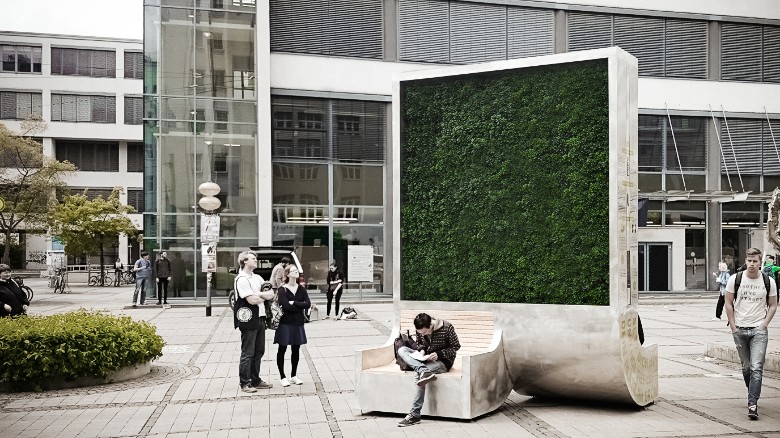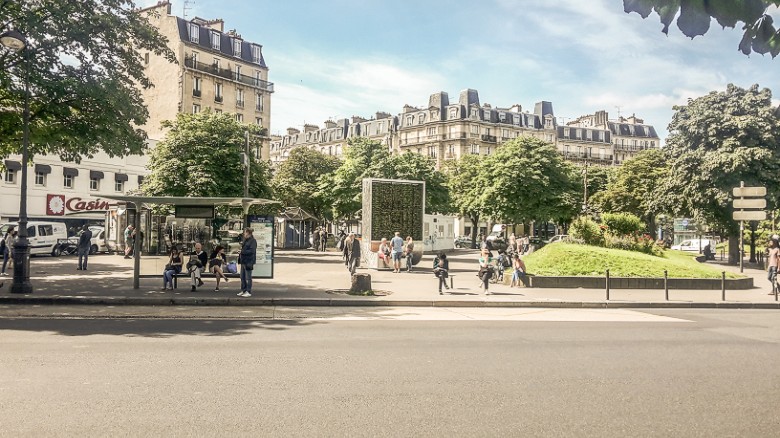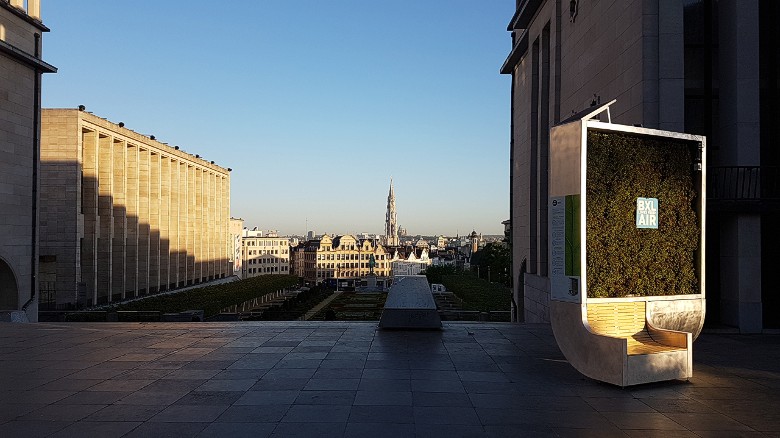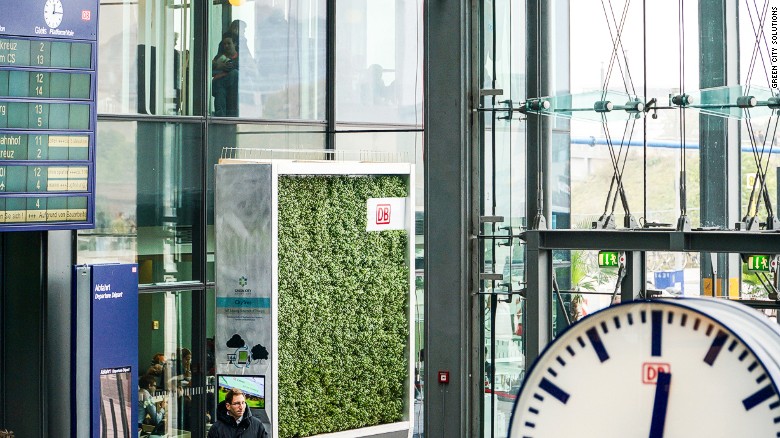Our global population is heading into urban settings. We believe that number living in cities will soon hit 60% of the world's population. That is a lot of people sharing limited space and resources.
Which brings problems. Which brings pollution and loss of natural resources. That is why it is good to see so much innovation around cleaning our environment while allowing for quality of life for all citizens. Even those most impacted by sprawl and dense development.
This 'tree' has the environmental benefits of a forest

The
"CityTree" has the same environmental impact of up to 275 normal urban
trees. Using moss cultures that have large surface leaf areas, it
captures and filters toxic pollutants from the air.
Story highlights
- Urban installation uses moss to remove pollutants from air
- It offers the environmental benefit of 275 trees, its makers say
(CNN)Air pollution is one of the world's invisible killers.
It causes seven million premature deaths a year, making it the largest single environmental health risk, according to the World Health Organization.
In
urban areas, air quality is particularly problematic. More than 80% of
people living in areas where pollution is monitored are exposed to air
quality levels that exceed WHO limits. And given that by 2050 two thirds of the global population will be urban, cleaning up our cities' air is a matter of urgency.
One well-established way to reduce air pollutants is to plant trees, as their leaves catch and absorb harmful particulates.
But planting new trees is not always a viable option.
That's why the "CityTree",
a mobile installation which removes pollutants from the air, has been
popping up in cities around the world, including Oslo, Paris, Brussels
and Hong Kong.
Moss is in the air
Each
CityTree is just under 4 meters tall, nearly 3 meters wide and 2.19
meters deep, available in two versions: with or without a bench. A
display is included for information or advertising.
Berlin-based Green City Solutions claims its invention has the environmental benefit of up to 275 actual trees.
But the CityTree isn't, in fact, a tree at all -- it's a moss culture.
"Moss
cultures have a much larger leaf surface area than any other plant.
That means we can capture more pollutants," said Zhengliang Wu,
co-founder of Green City Solutions.
The
huge surfaces of moss installed in each tree can remove dust, nitrogen
dioxide and ozone gases from the air. The installation is autonomous and
requires very little maintenance: solar panels provide electricity,
while rainwater is collected into a reservoir and then pumped into the
soil.
To monitor the health of the moss, the CityTree has sensors which measure soil humidity, temperature and water quality.
"We
also have pollution sensors inside the installation, which help monitor
the local air quality and tell us how efficient the tree is." Wu said.
Its
creators say that each CityTree is able to absorb around 250 grams of
particulate matter a day and contributes to the capture of greenhouse
gases by removing 240 metric tons of CO2 a year.
A tale of four friends
The story of the CityTree dates back 11 years.
While
studying at Dresden University of Technology, Wu met Victor
Splittgerber, a mechanical engineer, and Dénes Honus, an architect.
After graduating, they ran a workshop at the university on sustainable
urban design focusing on new ways to tackle environmental problems in
cities.
Four years ago, the trio
met Peter Sänger, a graduate in production management for horticulture,
and the idea for the CityTree project was born.
Today, bureaucratic obstacles are the main challenge.
"We
were installing them (the CityTrees) in Modena, Italy, and everything
was planned and arranged, but now the city is hesitant about the places
we can install because of security reasons," Wu said.
The
team also has plans to introduce the "CityTree" to cities in
lower-income countries such as India, which tend to have elevated levels
of pollutants.
So far, around 20 CityTrees have been successfully installed, with each costing about $25,000.
Can this really fight pollution?
Gary
Fuller, an expert on air pollution at King's College London, thinks
that the concept of an urban air purifier might be too ambitious.
"Even
if you had a perfect air cleaner, getting the ambient air in contact
with it is really hard," he told CNN. Pollution from a car exhaust, for
example, gets dispersed vertically a few kilometers into the air.
"Efforts
would be better put into stopping the pollution from forming in the
first place, maybe cleaning up a city's bus fleet," he added.
The CityTree inventors say that they are aware of this and choose the location of each CityTree carefully.
"We
intentionally pick spots where pollution is heavy due to traffic and
air flow is limited. We are also testing a ventilation system to create
our own air flow that gets the pollution to the tree."
Wu also argued that the CityTree is just one piece of a larger puzzle.
"Our ultimate goal is to incorporate technology from the CityTree into existing buildings," he said.
"We
dream of creating a climate infrastructure so we can regulate what kind
of air and also what kind of temperature we have in a city."





No comments:
Post a Comment